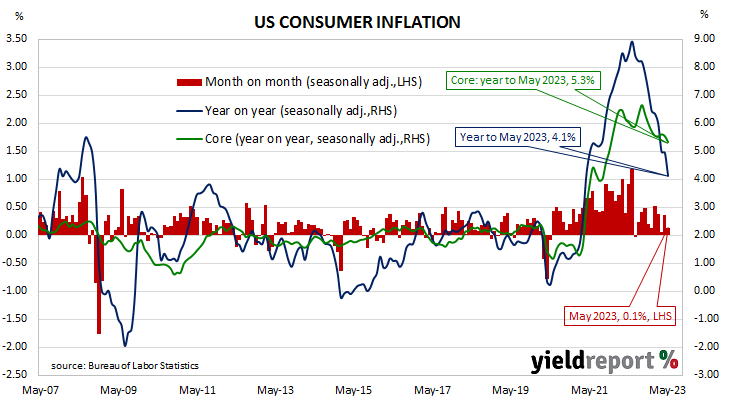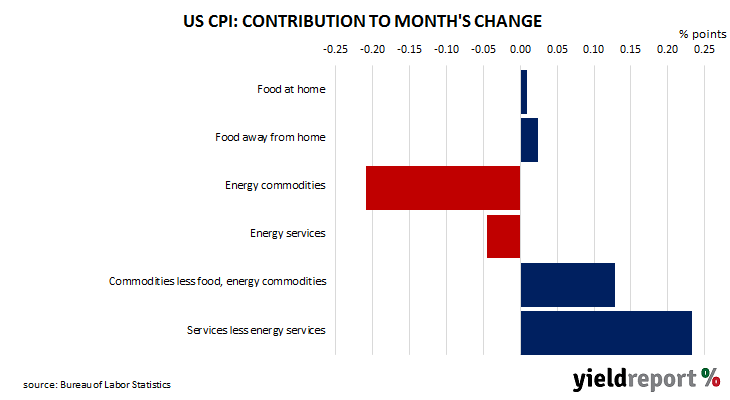Summary: US CPI up 0.1% in May, less than expected; “core” rate up 0.4% again; NAB: core inflation stubborn, other core measures provide more room for optimism; Treasury yields rise; rate-cut expectations soften; ANZ: shelter inflation will start to moderate, “heady” second-hand vehicle prices to moderate; non-energy services prices again main driver, adds 0.23 ppts.
The annual rate of US inflation as measured by changes in the consumer price index (CPI) halved from nearly 3% in the period from July 2018 to February 2019. It then fluctuated in a range from 1.5% to 2.0% through 2019 before rising above 2.0% in the final months of that year. Substantially lower rates were reported from March 2020 to May 2020 and they remained below 2% until March 2021. Rates have since risen significantly, although they have been declining since mid-2022.
The latest US CPI figures released by the Bureau of Labor Statistics indicated seasonally-adjusted consumer prices increased by just 0.1% on average in May. The result was less than the 0.2% increase which had been generally expected as well as April’s 0.4% rise. On a 12-month basis, the inflation rate slowed from 5.0% to 4.1%.
“Headline” inflation is known to be volatile and so references are often made to “core” inflation for analytical purposes. The core prices index, the index which excludes the more variable food and energy components, increased by 0.4% on a seasonally-adjusted basis over the month. The rise was in line with expectations as well as April’s increase and the annual growth rate slowed from 5.5% to 5.3%.
“While core inflation has been stubborn, tracking sideways at around 5.0% in 3-month annualised terms through 2023, other core measures provided more room for optimism,” said NAB economist Taylor Nugent. “A narrower core excluding shelter and used cars rose just 0.1% and 2.3% 3-month annualised, its lowest since March 2021.”
US Treasury bond yields rose on the day, especially at the short end of the curve. By the close of business, the 2-year Treasury yield had gained 10bps to 4.68%, the 10-year yield had added 9bps to 3.83% while the 30-year yield finished 5bps higher at 3.95%.
In terms of US Fed policy, expectations of a lower federal funds rate in 2024 softened considerably. At the close of business, contracts implied the effective federal funds rate would average 5.13% in July, 5bps more than the current spot rate, and then increase to an average of 5.255% in August. September futures contracts implied a 5.265% average effective federal funds rate while June 2024 contracts implied 4.59%, 49bps less than the current rate.
“We know that new rental contracts have been falling since the middle of last year, so in coming months we expect that shelter inflation will start to moderate,” said ANZ senior economist Adelaide Timbrell. ”We also do not expect the heady second-hand vehicle prices to continue. There may be grounds for optimism, therefore, that the FOMC is getting on top of the inflation problem although a key focus will remain on core services prices ex-shelter.”
The largest influence on headline results is often the change in fuel prices. Prices of “Energy commodities”, the segment which contains vehicle fuels, decreased by 5.6% and subtracted 0.20 percentage points from the total. However, prices of non-energy services, the segment which includes actual and implied rents, again had the largest effect on the total, adding 0.23 percentage points after increasing by 0.4% on average.



